Units Supported by 220th Aviation Company,
from 1965 through 1971
(From various attributable and reliable sources)
Complier's Note: As it becomes available, we plan to add additional information regarding the nature and mutual benefits of support provided each unit.
Our veterans group mailing list is an opt–in/opt–out type arrangement. So long as you wish to receive our group email message your contact information will remain also in the designated email box groups named “CAT 1 through CAT 7.” If you wish to no longer receive messages within the group mailing, just send me a private email and ask to be removed from the group. If you desire to be included in our group email list, please contact the editor. This is how we remain compliant with anti-SPAM laws. Don Ricks
PATCH/CREST |
DESIGNATION OF UNITS SUPPORTED |
|---|---|
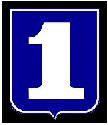 |
ARVN 1st Infantry Division (Primarily Hue area and North of Da Nang) |
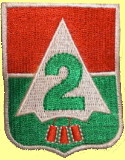 |
ARVN 2nd Infantry Division (Primarily Quang Ngai area and South of Da Nang) |
 |
ARVN I Corps Headquarters (Da Nang) |
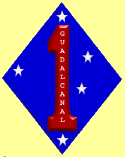 |
1st Marine Division (South of Da Nang—Quang Ngai, Quang Tin and Quang Nam Provinces). Arrived in Chu Lai in August 1965 |
 |
1st Marine Aircraft Wing (Based at Chu Lai) |
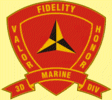 |
3nd Marine Division (North of Da Nang—Thua Thien and Quang Tri Provinces) |
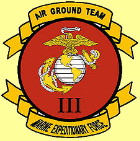 |
Initially deployed as the 3rd Marine Expeditionary Brigade in 1965—then reorganized as the III Marine Amphibious Force in 1966 with 1st Marine Aircraft Wing at Chu Lai, 1st Marine Division at Chu Lai and 3rd Marine Division at Da Nang with a HQ Division (Fwd) at Phu Bai) |
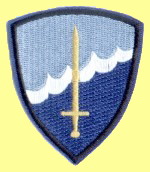 |
Naval Task Force Clearwater Consisting of Dong Ha River Security Group and Hue River Security Group. TF Clearwater was a riverine force; it gradually wound down as ground security in the area improved. |
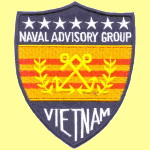 |
Advisory Team 143, US Naval Advisory Group, Vietnam
Overview: American leaders established the Military Assistance Advisory Command, Vietnam, in May 1964. MACV replaced MAAG and the former MAAG personnel were absorbed by MACV. The old Navy section of MAAG became the Naval Advisory Group, Vietnam, and by the end of 1964 there were 235 naval personnel in the 4,900-man MACV command to attend to the needs of the growing Vietnamese Navy. Team 143 advised Vietnamese Navy units, which were located in the Vietnamese Navy's First Coastal Zone (I CZ) |
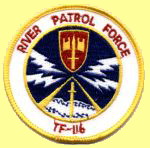 |
Naval Task Force 116 "River Sailors also gave critical support to allied forces fighting to contain the enemy surge in I Corps. From September to October 1967, River Section 521 and Hunterdon County deployed to the river area south of Danang and to Cau Hai Bay near Hue. PBR units operated permanently in the northern reaches of South Vietnam after 24 February 1968, when COMNAVFORV established Task Force Clearwater, under the operational control of Commanding General III Marine Amphibious Force. The Mission of the task force was to secure the Perfume River which gave access to Hue from the sea and then Cua Viet. The Task Force eased supply efforts to American forces arrayed along the DMZ and holding the besieged outpost at Khe Sanh." [source: Mobile Riverine Force Association |
 |
ARVN 7th Vietnamese Airborne Regiment (part of a Task Force after Tet '68 with the 1st ARVN Infantry Division in the restoration of Hue City) |
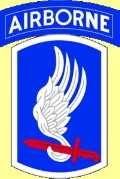 |
173rd Airborne Brigade (US) [with XXIV Corps] |
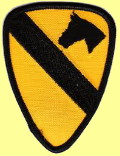 |
1st Cavalry Division (US) [TET Offensive 1968—Hue, Quang Tri, Khe Sanh and A Shau until May, possibly June] |
 |
Americal Division (originally Task Force OREGON)—based at Chu Lai |
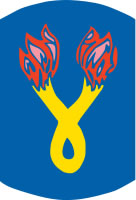 |
196th Light Infantry Brigade (US) [with the Americal Division, XXIV Corps]. 196th Light Infantry Brigade belonged to the Americal Division, also known as 23rd Infantry Division. All three light brigades had been activated as independent units for service in Vietnam, then consolidated under the reactivated Americal. |
 |
XXIV Corps (HQ in Phu Bai – later in Da Nang) [Also seen as 24th Corps] |
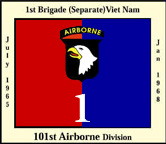 |
1st Brigade (Separate), 101st Airborne Division (US) |
 |
101st Airborne Division (Airmobile) [US] |
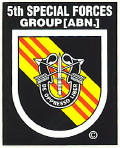 |
5th Special Forces Group (US) [Throughout I Corps] |
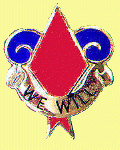 |
1st Brigade, 5th Mechanized Division (US) |
 |
3rd Brigade, 82nd Airborne Division (US) |
 |
108th Field Artillery Group (US) |
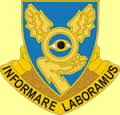 |
1st Military Intelligence Battalion (Air Reconnaissance Support) (MIBARS) |
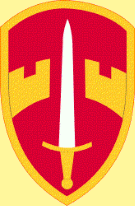 |
US Army MACV Advisers (Throughout I Corps) |
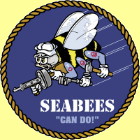 |
Seabees (US) [Throughout I Corps |
Compiler's Note: In addition to the Marine aircraft from the 1st MAW, in 1966-67 we worked with many Navy aircraft crews from the USS Kitty Hawk who came in under the ceiling cover when the Air Force from Da Nang (Main) were not able to support the ground forces from their VFR on top locations. We also had an Air Force National Guard unit (in time I hope to recall their type aircraft and where they came from) that came to RVN from the US to join the fight and took missions when the USAF waived off. On many occasions when the USAF, and their TASS as well, were trying to work at least 1000 feet higher than we were operating, the 220th and "others" were there to offer support.
Gene Wilson
212th CSAB, Story by SP5 Victor B. Lackey (1969) [not edited]:
COACHMEN, ALLEY CATS, BLACK CATS, BLACK ACES,. CAT KILLERS, NIGHTHAWKS.. and REDEYE. These aren't the names of football teams, nor are they the names of tough motor- cycle gangs. They're the names of the units of the 212th Combat Sup port Aviation Battalion. En masse known to the combat units of I Corps as "The Wings of Freedom." The 212th Combat Support Aviation Battalion is unique in the sense that it is the only battalion directly under the Ist Aviation Brigade. Units in the 212th are under operational control of III MAF with suballocation to 24th Corps, I Corps (ARVN), Americal Division, 2d ARVN Division and the 101st Airborne Division. "This Battalion is very diversified in its mission. It has numerous types of operational helicopters, and fixed-wing aircraft." These are the words of LTC Bernard W. Bruns, former commanding officer of the 212th Combat Support Aviation Battalion. The 212th CSAB located at the Marble Mountain complex near Da Nang is the I Corps aviation center. At the Marble Mountain installation is Headquarters Company which provides support for the entire battalion.
Also at Marble Mountain is the 282d Assault Helicopter Company, the "Black Cats." Major Val Panzitta, commander of the 282d AHC, is the only aviator in the unit on his second tour in Vietnam. The rest of the company's pilots are first tour men. The fact that they are first tour men has no real significance, however the fact that they are all new aviators just out of flight school does. Even with 59 aviators on their initial aviation tour the 282d has one of the finest assault records in Vietnam. Major Panzitta believes that the unit owes it's great record to his maintenance crews. In the last 4 months they have been 90% operational. The average for an assault company is around 75%. The "Black Cats" have some bothers known as the "Alley Cats" who are capable of bearing a little more claw and fang. "Alley Cats," gunship platoon of the 282d, known for their cunning and ferocity, are well respected by the NVA and VC in the I Corps area. They are on 15-minute standby 24 hours a day. In flying ground support missions the miniguns and 2.75mm rockets of the "Alley Cats" can be on their target within 20 minutes of a request from one of the field commanders. The "Black Cats" and "Alley Cats" of the 282d AHC are respected for their fast service and deadly fire power. They are also known for fine civil action programs. Operation Silver Lining is their project to support the Sacred Heart Orphanage just 4 miles south of Da Nang. They have written to groups in the states and asked them to donate clothing, soap, cooking utensils, plates, silverware, and used toys. "The response has been tremendous," says Major Panzitta. "Some of the people back home have even been sending checks to be given to the orphanage."
"Redeye," not the kind you drink, but the type that sees in total darkness is the name of the 245th Surveillance Airplane Company. The 245th SAC, located at the Marble Mountain air facility, is commanded by Major Gordon K. Lee Jr. The Mohawk aircraft of the 245th SAC flew 950 hours in the month of December.
The eyes of the Americal Division, and the 2d ARVN Division in I Corps are the "Black Aces" of the 21st Reconnaissance Airplane Company. The Bird dogs of the 21st RAC as well as the rest of the 212th CSAB are feared by most of the experienced enemy troops in I Corps. "They have nearly gotten to the point that they don't like to fire on the virtually defenseless 0-1 aircraft due to the destruction that the Bird Dog can call in on him," says Captain James Wyner, a Bird Dog pilot in the 21st.
Just a few minutes by air from Marble Mountain is the Phu Bai airstrip. Located at the Phu Bai base is the Corps Aviation Company (Provisional) providing lift capabilities for all of 24th Corps. The "Coachmen" as they are known in I Corps, fly 1,000 hours per month or better. Also located at Phu Bai is the 131st Surveillance Airplane Company. The "Nighthawks" who have a MACV-J2 mission are commanded by Major Gary Alton.
"Cat Killers, Guardians of the DMZ, Eyes of I Corps," these are the names of the 220th Reconnaissance Airplane Company. Being the only Bird Dog unit in I Corps from June 1965 until January 1968 tends to give a unit such as the 220th many nicknames. "The most rewarding command I've ever had," states Major James M. Wisby, commanding officer of the 220th. The 220th serves almost every type of unit in I Corps. Third Marine Division, 101st Airborne Division, Ist ARVN Division, 108th Artillery Group, Ist Brigade, 5th Mechanized Division, and the Naval Task Force off the coast of Vietnam all utilize 220th spitters. When fire direction missions were needed north of the DMZ, the 220th was there first with 0-1 aircraft. They served as eyes for the guns in the south. flying over 850 missions per month the "Cat Killers" locate the enemy and call in the firepower to complete the job. Waging war is not the only mission of the 220th. Their civil action programs are on their way to being some of the most successful in the I Corps area. Thanksgiving day, 1968, 50 children from one of their orphanages in Hue had a complete Thangsgiving dinner with the men of the 220th. The men of the 220th RAC lend support in the way of food, clothing and other gifts to 3 orphanages in the provincial capitol of Hue. The unit is well rewarded for their kindness by the smiles of the young children of the orphanages, and the sisters who operate the homes for the homeless children of war.
On January 1, 1969 LTC Bruns turned the command of the 212th CSAB over to LTC Jack L. Mullen, formerly with the 17th Combat Aviation Group. LTC Bruns envies LTC Mullen, "He is taking over the finest command I've ever had the pleasure of serving."




